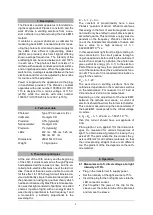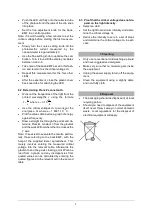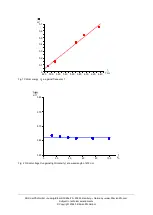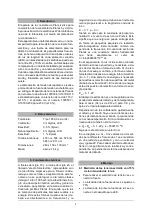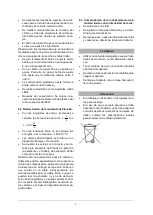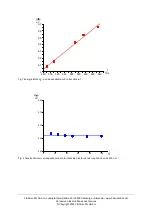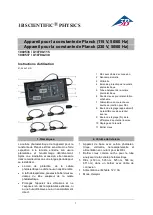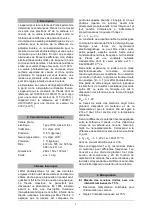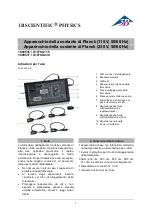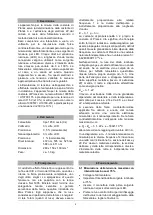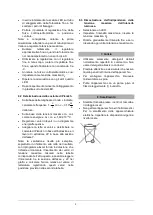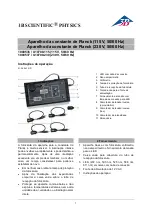
2
3. Description
The Planck’s constant apparatus is for determin-
ing the magnitude of Planck’s constant
h
and the
work
W
done in emitting electrons from a cae-
sium cathode in a photocell using the back-EMF
method.
It contains a vacuum photocell, a voltmeter for
measuring back EMF, a nanoammeter for meas-
uring the photocell current and a power supply for
the LEDs. Five different light-emitting diodes
(LEDs) are provided, which emit light at differing
known average frequencies. The intensity of the
emitted light can be varied between 0 and 100%
in each case. The photocell itself consists of a
cathode with caesium condensed onto its surface
and a ring-shaped anode. When the apparatus is
switched on, a voltage is applied between the two
electrodes and this can be adjusted by two knobs
for coarse and fine adjustment.
Power is supplied to the apparatus via the plug-
in transformer provided. The Planck’s constant
apparatus with order number 1000536 / U10700-
115 is designed for a mains voltage of 115 V
(±10%) while the version with order number
1000537 / U10700-230 is for 230 V (±10%).
4. Technical data
Photocell:
Type 1P39, caesium (Cs)
Voltmeter:
3½-digit LCD
Precision:
0.5% (typically)
Nanoammeter:
3½-digit LCD
Precision:
1% (typically)
LEDs:
472 nm, 505 nm, 525 nm,
588 nm, 611 nm
Dimensions:
280x150x130 mm
Weight:
1.3 kg approx.
5. Theoretical principles
At the end of the 19th century and the beginning
of the 20th, it almost seemed as though Physics
had explained all there was to know, but the so-
called photo-electric effect was one of the last rid-
dles. Classical theories were unable to account
for this effect. In 1905, though, Albert Einstein de-
vised a brilliantly simple theoretical description of
the phenomenon using the quantum theory which
had been introduced by Max Planck. His assump-
tion was that light consisted of particles, so-called
photons (quanta of light), with an energy
E
which
was directly proportional to their frequency
f
and
a momentum
p
indirectly proportional to the
wavelength
:
/
E
h f p h
The constant of proportionality here
h
was
Planck’s “quantum of action”. What it meant was
that energy in the form of electro-magnetic radia-
tion could only be emitted in small, discrete pack-
ets called quanta. This minimum energy was de-
pendent on the frequency. Planck’s constant is
one of the fundamental constants of nature and
has a value to a high accuracy of
h
=
6.62606896*10
-34
Js.
In this experiment light from the light emitting di-
ode connected in the circuit passes through a
ring-shaped anode before striking the cathode. If
an electron is struck by a photon, the photon can
give up all of its energy (
E h f
) to the electron.
Part of that energy may then propel the electron
out of the metal surface (the so-called work func-
tion
W
). The rest of it is converted into kinetic en-
ergy for the electron:
kin
E
h f W
The work done in emitting electrons from the
cathode is dependent on the material as well as
on the temperature. For caesium it is 2.14 eV at
0 K and about 2 eV at room temperature.
Depending on the adjustment of the back EMF
between the cathode and anode, a current of
electrons should flow from the former to the latter.
This can be measured using the nanoammeter. If
the back-EMF corresponds to the critical voltage
U
0,
where
0
kin
e U
E
h f W
and
19
1.6021 10 C
e
,
then this current should have a magnitude of
0 nA.
Plot a graph of
0
e U
against
f
for the critical volt-
ages
U
0
, measured for various frequencies of
light
f,
to obtain a line of gradient
h
crossing the y
axis at
W
. The point where the line crosses the y-
axis is different for all cathode materials, so that
the corresponding straight lines are all different
too. The gradient of the line depends on the cath-
ode material.
6. Operation
6.1 Measurement of critical voltage at a light
intensity of 75%.
Plug in the transformer to supply power.
Set the intensity of the light source to 75%.
Insert the plug for the first light source into the
LED connector socket.
Push together the jaws of the clip for the
sleeve over the collector tube of the photocell
and remove the sleeve.






